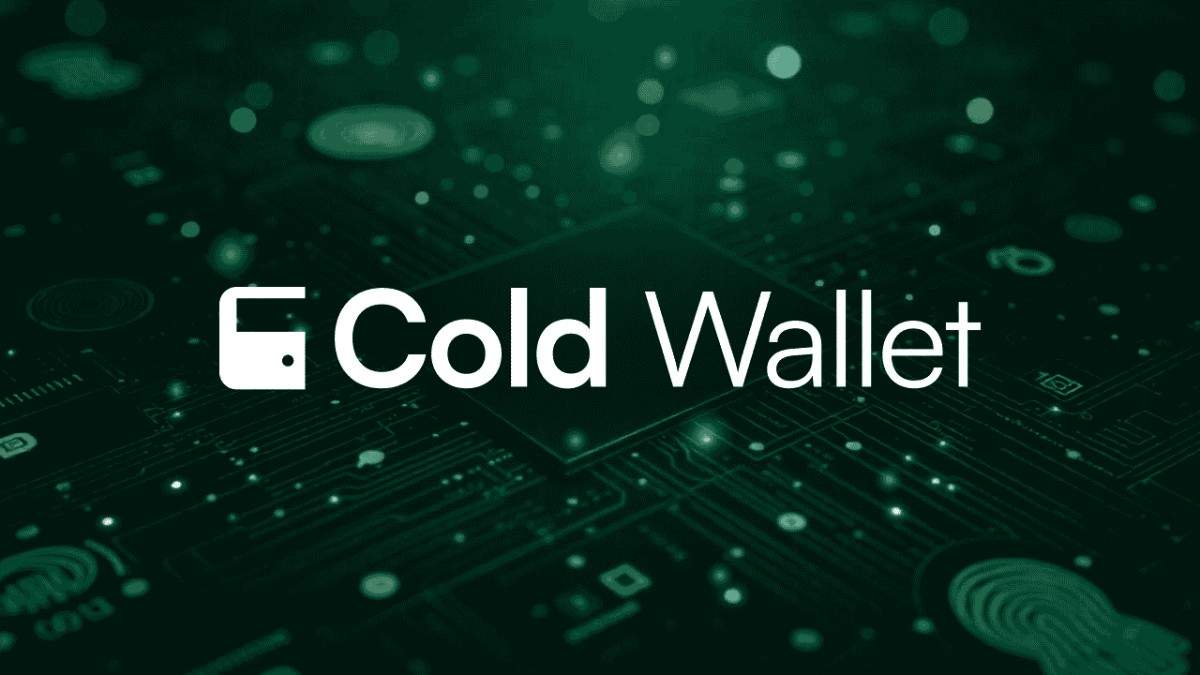
Cold wallets offer top-tier offline security for your crypto. Discover the best options, setup tips.
Cold wallets or cold storage wallets are cryptocurrency storage solutions that keep private keys offline, out of reach from the internet. Offline approach protects digital currencies like Bitcoin, Ethereum, and other altcoins from online dangers like hacking, phishing, or malware. Unlike hot wallets, which remain online and suitable for frequent transactions, cold wallets prioritize security and are ideal for long-term secure storage of precious crypto assets.
Why Use Cold Wallets?
The main benefit of cold wallets is their high security. By keeping private keys cryptographic codes necessary to unlock your cryptocurrency offline, cold wallets remain impervious to cyber attacks such as malware, phishing, or exchange hacking. They are also shielded from centralized platform failures, which have, in the past, resulted in massive losses. Cold wallets provide users with complete control of their private keys, minimizing dependency on third-party services and bringing peace of mind to investors who hold large crypto portfolios.
Types of Cold Wallets
Cold wallets come in countless forms, each with different requirements and interests. Hardware wallets such as the Ledger Nano X or Trezor Model T are hardware units that securely store private keys and facilitate secure transactions. Paper wallets involve printing private and public keys on paper, providing an affordable, offline option. Air-gapped devices, such as specialized computers never to be on the internet, offer maximum isolation.
Benefits of Cold Wallet Use
Cold wallets offer unmatched security for cryptocurrency assets. Through their offline storage, they cannot be attacked online, and they are suited best for long-term investments. They shield against exchange vulnerabilities such as hacks or insolvency that have hurt platforms in the past. Cold wallets also allow users to hold their private keys, eliminating third-party risks.
Installing a Cold Wallet
Installation of a cold wallet depends on the type. For hardware wallets, purchase a unit from a reputable maker, install it with a secure PIN, and store the recovery seed phrase offline in a safe location, such as a fireproof safe or safety deposit box. Paper wallets consist of making keys with a reputable, offline device, printing them, and storing the paper securely. Air-gapped devices mean implementing a unique, offline system to manage keys. Installation must always be performed in a secure, offline environment to avoid exposing keys to threats.
Risks and Mitigation Strategies
While cold wallets are highly secure, they do pose some risks. Losing a hardware wallet, paper wallet, or recovery seed phrase without a backup means losing money forever. Physical damage, theft, or environmental destruction like fire or water can also weaken wallets. To mitigate these, store seed phrases in more than one secure location, e.g., tamper-proof containers or safety deposit boxes. Inspect for genuine hardware wallets and firmware updates from authorized sources. Having several cold wallets to diversify will also reduce the risk of a single point of failure.
Best Practices for Managing Cold Wallets
To provide cold wallets with ultimate security, follow these best practices. Store recovery seed phrases offline in durable, tamper-proof locations and never reveal them. In the case of paper wallets, print using high-grade archival-quality paper or laminate to prevent degradation. Regularly inspect hardware wallets for physical tampering and update firmware securely. Never attach cold wallets to internet-enabled devices when setting them up or using them. Spreading cryptocurrency over multiple cold wallets optimizes security by minimizing exposure to potential threats.
Cold Wallets and Hot Wallets
Choosing between cold wallets and hot wallets will depend on the purpose of your crypto. Cold wallets are most suitable for long-term holders who have a huge amount of cryptocurrency and the highest level of security. Hot wallets, such as mobile apps or exchange wallets, are most suitable for heavy trading or constant smaller transactions since they are more accessible but at higher risk of online attacks. Most users use a hybrid approach, saving cold wallets for the majority of holdings and hot wallets for day-to-day usage, balancing security with convenience.
Conclusion
Cold wallets are the foundation of safe storage of cryptocurrencies, offering robust protection against cyberattacks through the isolation of private keys from the internet. Regardless of whether you use a hardware wallet, paper wallet, or air-gapped device, awareness of their setup, vulnerabilities, and good practices is important. The best cold wallets empower users to safeguard their digital assets with confidence, making them indispensable for serious crypto investors. By adopting a cold wallet, you can navigate the cryptocurrency landscape securely, ensuring your wealth remains protected in an increasingly digital world.
© 2024 Crivva - Business Promotion. All rights reserved.